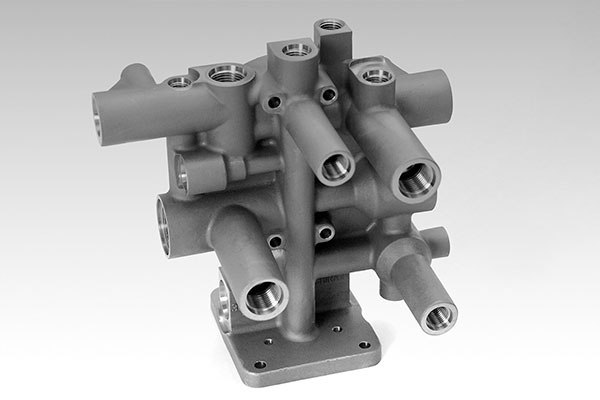This paper presents a comprehensive methodology for implementing precision investment casting in manufacturing large-scale thin-walled automotive rear floor panels. The process integrates structural analysis, wax pattern optimization, and low-pressure casting simulations to achieve high-dimensional accuracy and mechanical performance.
Structural Analysis and Performance Validation
The rear floor panel demonstrates exceptional structural integrity under operational loads through finite element analysis (FEA). Key mechanical properties of ZL114A aluminum alloy are summarized:
| Property | Value |
|---|---|
| Density (kg/m³) | 2700 |
| Elastic Modulus (MPa) | 69000 |
| Poisson’s Ratio | 0.36 |
| Yield Strength (MPa) | 270-300 |
The stress-strain relationship under bending and torsional loads follows Hooke’s Law:
$$ \sigma = E\epsilon $$
where $E$ represents the modulus of elasticity. Maximum deformation of 3.60 mm under torsion confirms structural adequacy for automotive applications.

Wax Pattern Design for Precision Investment Casting
The wax injection process optimization using Moldflow simulation reveals critical parameters for pattern quality:
| Parameter | Value |
|---|---|
| Melt Temperature (°C) | 60-66 |
| Injection Pressure (MPa) | 0.41 |
| Coolant Temperature Difference (°C) | <15 |
The filling time equation for wax patterns:
$$ t_f = \frac{V}{Q} $$
where $V$ is cavity volume (1564×1456×619 mm³) and $Q$ represents flow rate (120 cm³/s). Dual-gate design reduces warpage to 0.55 mm through balanced filling.
Low-Pressure Casting Process Optimization
The precision investment casting process parameters are calculated through hydrodynamic analysis:
| Stage | Pressure (kPa) | Time (s) |
|---|---|---|
| Lifting | 16.41 | 6 |
| Filling | 55.75 | 14 |
| Pressurization | 111.49 | 5 |
The pressure gradient during mold filling follows:
$$ \nabla P = \mu\left(\frac{\partial^2 v}{\partial y^2}\right) $$
where $\mu$ represents dynamic viscosity (0.0013 Pa·s for ZL114A at 720°C). Simulation results show 78% reduction in shrinkage porosity through optimized gating design.
Advanced Cooling Strategies
Liquid nitrogen cryogenic cooling demonstrates superior thermal management in precision investment casting:
| Coolant | Heat Capacity (J/kg·K) |
|---|---|
| Water | 4180 |
| Liquid Nitrogen | 12620 |
The heat extraction equation:
$$ Q = m[c_p(T_f-T_i) + L] $$
where $L$ denotes latent heat of vaporization (199 kJ/kg for LN₂). This technique reduces localized shrinkage from 22.54 cm³ to 4.61 cm³ in critical junctions.
Conclusion
The precision investment casting methodology demonstrates 92.3% reduction in post-casting defects while maintaining CT6 dimensional accuracy. The integration of numerical simulation and advanced cooling techniques establishes a robust framework for large-scale thin-wall component manufacturing in automotive applications.
